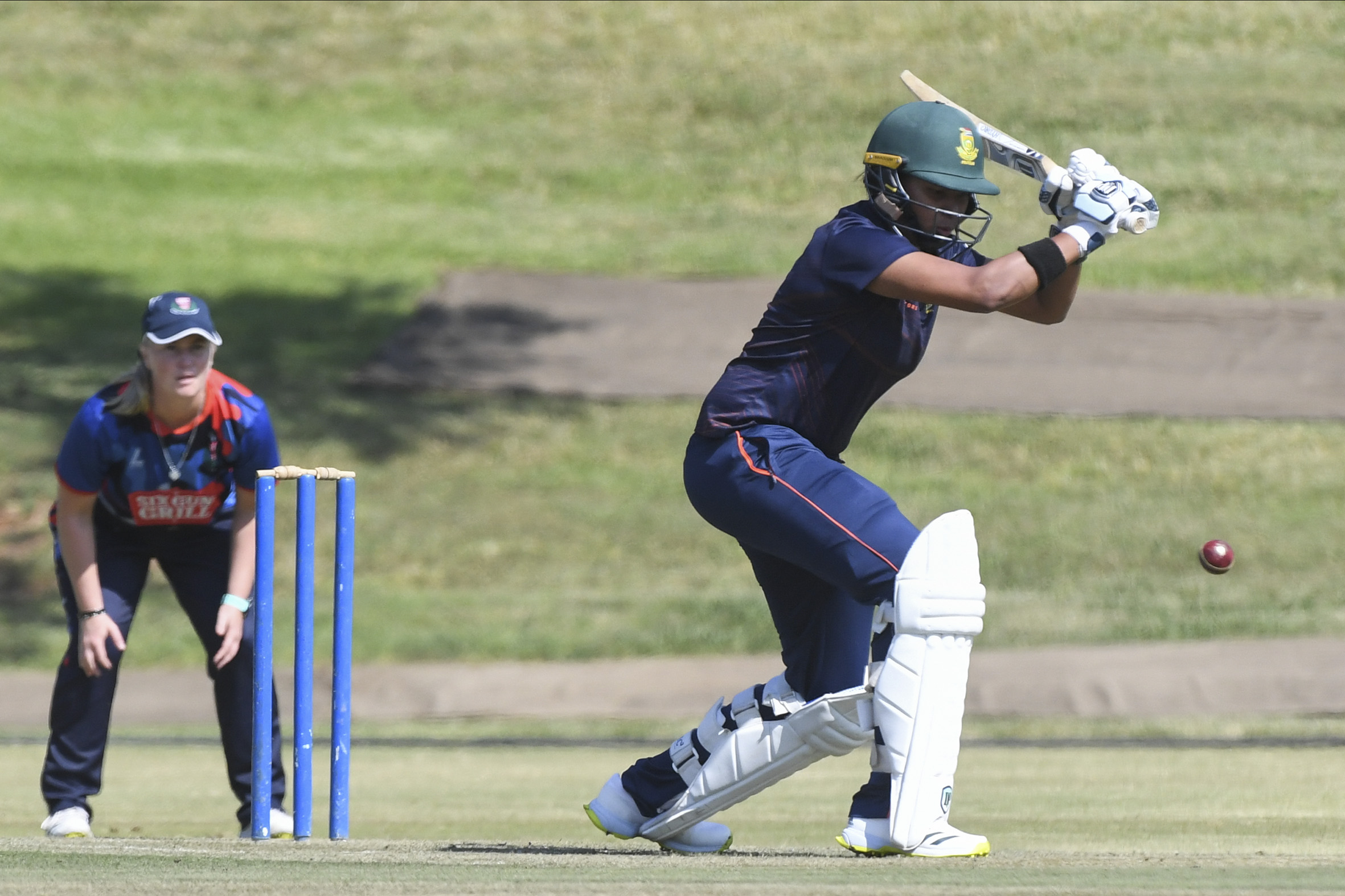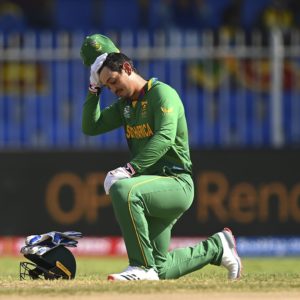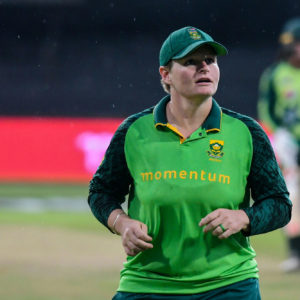Test cricket is dead, but not for the eager Proteas
Even before the demise of this format of the game was predicted, the women’s team had little opportunity to experience and enjoy it. They are keen to change this while they still can.
Author:
25 June 2022

There’s a reason they call it a Test. No other format in cricket challenges the mental and physical faculties of its participants quite like it. The game undulates over days and the pitch is an evolving canvas, with every pointillist scuff and divot leaving its mark. The characters embark on dramatic arcs, triumphing and failing in pursuit of victory.
And yet the death knell has been sounding for the game ever since England and Australia each assembled 11 men in 1877. Darkening the mood, the International Cricket Council’s independent chairperson, Greg Barclay, read the last rites.
“If you look at the way cricket is going, there is no doubt that white ball is the way of the future. That is the game that is sought-after by the fans, where the broadcasters are putting their resources and what is driving the money,” Barclay told BBC Radio’s Test Match Special during the first Test between England and New Zealand at Lord’s earlier in June.
“To play Test cricket you have got to have structures domestically. They don’t really exist in any of the countries at the moment. I can’t really see women’s Test cricket evolving at any particular speed. That is not to say any countries that choose to play Test cricket cannot do so, but I don’t see it being any part of the landscape moving forward to any real extent at all.”
Related article:
Barclay’s bleak forecast for the future resonated at a different frequency across the hierarchical pyramid. For as much as male cricketers will feel the pinch, it won’t compare to the vice-like squeeze on the women’s game.
“It was hard to hear those comments, I’m not going to lie,” says Laura Wolvaardt, 23, South Africa’s top-order batter and one of the most fluent stroke-makers in the game. “Playing a Test for your country is something that I’ve always dreamed of doing. I can’t wait to do it. It would be a real shame if I only get one chance to do it. This is why the next few weeks are so important. For me personally and for the team, but also the women’s game as a whole.”
South Africa take on England in a one-off Test in the small town of Taunton in southwest England on 27 June. It will be Wolvaardt’s 114th match for her country, but her first competitive red-ball, multi-day match.
“I have no idea what to expect,” she says, though is well prepared, having scored 101 in a warm-up match against England ‘A’ this week. “I’m a little nervous because no matter what format you play, you can’t replicate real-world experience. I’m confident I’ll be okay. I back my technique and I actually think this is my natural format. I like batting long, but I just don’t know for sure.”
A low Test tally
South Africa’s women Proteas last played a Test in 2014, losing to India in Mysuru by an innings and 34 runs. Before that they played against the Netherlands in 2007 and before that they competed in a two-match series in 2003. In total, the South African women’s team has taken to the field in 13 Tests. By contrast, the men’s team have played 452 Tests, including 13 since January last year.
It’s not just in South Africa where a major disparity has calcified. Katherine Brunt, one of England’s most successful bowlers, announced her retirement from Test cricket last week. She made her international debut in August 2004, three years before her male counterpart, Stuart Broad. Brunt, who helped her country win three World Cups, signs off with 14 Tests to her name. Broad started his 155th against New Zealand on 23 June.
“We don’t expect it to be completely equal, but we’re very conscious that things aren’t equal,” says Shabnim Ismail, South Africa’s premium fast bowler, who took three wickets in her only Test against the Netherlands 19 years ago. A broken finger denied her the chance to play against India, which means she has unfinished business in this format.
Related article:
“You don’t need to tell us how big this is,” Ismail says. “We all know that this might be our last chance. And we all know that Test cricket is where you prove yourself as a player, where your skills are tested and where the greats prove themselves. I want to be remembered as a great. I can’t wait to get that red ball in my hand and stand at the top of my mark and look to bowl fast and swing it around corners. I haven’t had much practice with a red ball, but that won’t matter. I’ll be ready.”
A lack of preparation with a red ball – which swings more and holds its shape for longer compared with the white ball used in limited overs, single-day matches – is a pervasive problem facing the South Africans. Cricket South Africa organised two inter-squad practice matches for some of its players in May, but several key members were away at the FairBreak Invitational T20 competition in Dubai. Despite the recent tune-up game in England ahead of the Test, every player is undercooked to some degree.
“We obviously would have liked a few more sessions,” says the team’s bowling coach, Dillon du Preez. “From a technical perspective, I think our biggest challenge as a bowling unit would be the control of the red ball, especially the Dukes [hand-stitched balls] in these conditions. We all know the red ball will be swinging more and control might be an issue. Adjustment of line and length would be key in these conditions when the ball is swinging, getting batters to drive and hopefully bring our catchers into play.”
Mental acuity
It’s not just a technical adjustment that is required. Test cricket exists in the mind as much as the body, and those who establish themselves as titans of the format are as renowned for their powers of concentration as their hand speed and footwork. This, too, presents a challenge for the South Africans.
“I don’t think people realise how difficult it is switching between formats, especially if you don’t have much experience in it,” says Marizanne Kapp, the veteran allrounder who has been a mainstay in the side for 13 years. “I’ve found it hard in the nets. I’ve found myself blocking or even missing half-volleys and long-hops that I would normally smash because I’ve got myself in this mindset that I have to be defensive and play proper cricket.
“But that has been counterproductive. Because I’m so concerned about batting for time, I’ve lost that attacking intent, which isn’t good because you still have to score runs in Test cricket. It’s not just about occupying the crease. So it’s about the balance, but it’s hard. The biggest thing for me will be the mental aspect.”
Kapp is also out to rewrite her relationship with Test cricket. She had a torrid time in her only match against India eight years ago, going wicketless across 16 overs in an innings that saw Thirush Kamini and Poonam Raut combine for a second-wicket stand of 275 in a score of 400 for six declared. Kapp then made a second ball duck followed by a pedestrian 19 in an innings defeat.
Related article:
“Look, that’s not a great memory,” she says. And it is perhaps why she struggles to recount too many details from that chastening experience. “It was the most difficult thing we’ve ever had to do. We had no warm-up game, we had no prior experience with a red ball, we’d never played on a pitch like that. It was slow and turned from the first ball and their spinners took us apart. That sounds like I’m making excuses, but I think it’s important to recognise that we’re in a different place now as a team. We’re a lot more confident.”
Only five months separated that Test match and the first full-time contracts awarded to women cricketers in South Africa. In October 2013, six players, Kapp and Ismail among them, took the first steps as professionals and bastions of a new era for the Proteas.
“We were effectively amateurs still,” says Mignon du Preez, who captained South Africa in Mysuru, scoring 102 from 253 balls in her team’s first innings. “We were very much in the transition phase. We didn’t really have any preparation for Test cricket other than what we’d seen from men’s Test cricket on television. It was more about the experience of playing a Test match at that stage.”
Cautiously optimistic
Du Preez retired from Test cricket this year so will not take part in Taunton, but she will be watching as part of a much larger audience than the one that witnessed her marathon knock. The match will be broadcast on Sky and the BBC and picked up by SuperSport in South Africa.
Both Kapp and Du Preez blame a spate of dropped catches, sloppy ground fielding and poor fitness standards as the primary factors behind India’s gargantuan win. They do not believe these will be of concern for the England game.
“We’re in a different space now,” Kapp says. “I’ve been with the team a long time and it’s incredible how far we’ve come. We’ve now beaten all the big teams in white-ball matches and our players are in the best leagues around the world. We’re focused and professional and we hold ourselves to a higher standard.”
Related article:
Confidence is high in the camp. Pound for pound they’re as talented and capable as England and possess a clutch of star players capable of turning a Test on their own. Ismail’s ferocity and guile with the new ball will be key, even if her coach Du Preez has implemented a plan to prolong her potency by reducing her intensity in her first spell. Wolvaardt will also have a major say in the outcome and will be the prized scalp for the English bowlers. If she gets in there’s no telling how big she’ll go.
“I’ve dreamed of playing a Test match my whole life,” Wolvaardt says. “I remember watching Jacques Kallis at Newlands and thinking that looks incredible, I want that. I can put a lot of pressure on myself and I’m conscious not to do that, but I really want to do well. It’s a massive moment in my career.”
Let’s hope it won’t be her last.




